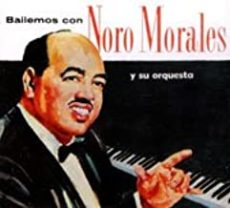
Daily Dose Of Jazz…
Noro Morales was born into a family with a long musical tradition in Puerta de Tierra, San Juan, Puerto Rico on January 4, 1911. As a child, he studied trombone, saxophone, and drums, finally settling on the piano. In 1935 he moved to New York City in search of a professional career and played with different bands including Alberto Socarras and Augusto Coén.
1937 saw him creating his own orchestra together with his brother Ismael, featured flutist, which competed with the likes of Tito Puente, Machito Grillo, the brothers Tito and Johnny Rodríguez, Davilita, and José Esteves known as Joe Loco. They began to record their first disc for Columbia and Decca Records and in a short time, Noro and their band became a staple on the New York City Latin music scene. The orchestra frequently performed in important clubs such as El Morocco, the Conga, and Copacabana. In 1942 with the Xavier Cugat Orchestra popularizing rumba, Morales got the opportunity to play for the first time, the prestigious dance of Harvest Moon organized by the Daily News newspaper.
At the time of the great mambo and swing bands, Morales was able to consolidate a unique style and original, and in the late 1940s and early 1950s, he achieved commercial success with several albums produced by the CODA label. His most famous compositions recorded were Rumba Rhapsody, Cute Woman, Nothing Is True, Palm Trees, Ponce, Cursed Jealousy, Rhythmic Serenade, and 110th Street & 5th Avenue.
Suffering from glaucoma, diabetes, and joint problems, in 1960 he decided to return to Puerto Rico, where he put together another band, consisting among others percussionist Ana Carrero and singer Vitín Avilés.
Composer, arranger, and pianist Noro Morales, who was a pioneer in the introduction of the Latin musical element in New York City, passed away on January 14, 1964 in San Juan.

More Posts: bandleader,composer,history,instrumental,jazz,music,piano

